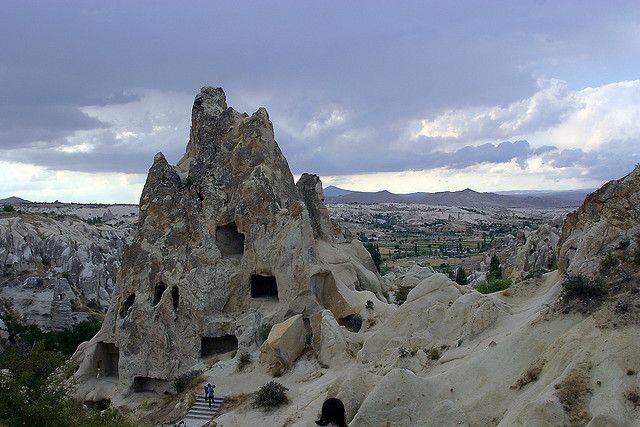[dt_button link=”http://d165vjqq8ey7jy.cloudfront.net/mp3/32661/se-8011s.mp3″ target_blank=”true” button_alignment=”default” animation=”fadeIn” size=”small” style=”default” bg_color_style=”custom” bg_color=”#333333″ bg_hover_color_style=”custom” bg_hover_color=”#444444″ text_color_style=”custom” text_color=”#ffffff” text_hover_color_style=”custom” text_hover_color=”#dddddd” icon=”fa fa-cloud-download” icon_align=”left”]Yuklash[/dt_button]
[dt_divider style=”thin” /]
Transcript:
Voice 1
Welcome to Spotlight. I’m Katy Blake.
Voice 2
And I’m Bruce Gulland. Spotlight uses a special English method of broadcasting. It is easier for people to understand – no matter where in the world they live.
Voice 1
A man is having some problems with his home. His home is very old. There is black mold growing from the walls. Some of the walls are leaking water. So the man makes some major changes. In the process, he removes a wall in his basement, below the ground. Behind the wall he finds a strange hole. He cannot see the bottom of the hole. There is no light, but the air smells clean. He and some of his friends explore the hole. As they enter, they shine their lights into empty space. Inside, they see things they did not expect. They find deep wells, houses, and even Christian churches. Someone carved all of these spaces into the solid white stone, deep under the ground.
Voice 2
This sounds like a scary horror story, told to frighten small children. But this story is true! In 1963 this happened to a man from Nevşehir, a province in the country of Turkey. He discovered a series of underground rooms under his home. Today, this place is called Derinkuyu Underground City. Today’s Spotlight is on Turkey’s underground cities.
Voice 1
Nevşehir is a very ancient place. It is part of an even larger area once called Cappadocia. In the ancient Greek and Roman empires, Cappadocia was famous. Even at that time, it was famous for its landscape of strange mountains and valleys. Much of the area is desert. Tall columns of rock stand in the middle of the desert. These rock columns formed because of ancient volcanoes. Ash came from inside the volcanos. This grey powdery substance filled the sky. It even blocked the sun. The ash covered the ground for many kilometres. Over many years the ash pressed together to become stone. Stone formed this way is called tuff. Tuff is a rock, but it is still very soft. Over the centuries, the wind and rain shaped the tuff into the mountains of modern day Nevşehir.
Voice 2
But the soft tuff is also very easy for people to shape. It was easy for any person to make a mark in the stones of Nevşehir. It is so soft, that people can shape it with their fingers. Over time, people carved many things into the tuff. Some even built shelters in the rock. The mountains are full of large holes. People dug these holes to make houses. For ancient people, this was easier than making a house out in the open. It was also easier to defend than houses above the ground. These small structures became underground cities. Still, most of the structures under Cappadocia are not as big as buildings above ground.
Voice 1
But the city of Derinkuyu is different. Scientists estimate that over 20,000 people could have lived there. In 2013, construction workers uncovered another series of caverns under Nevşehir city. Archaeologists are scientists who study these ancient ruins. They have explored some of this area. But there is still much more to see. Murat Gülyaz is the director of the Nevşehir museum. He told the National Geographic magazine,
Voice 3
“It is not possible to say how big the city is. But we can estimate from the city’s position, protection, and closeness to a water supply. We expect that it covers a very large area.”
Voice 2
Experts estimate that this city is over one third larger than Derinkuyu. Its tunnels could cover an area of over 400,000 meters. Thousands of people live above the ground in Nevşehir city. For generations they did not know what was under their feet. But under Nevşehir is a second city. It has its own streets, its own houses, and its own special history.
Voice 1
Through the centuries, different groups of people came into Cappadocia. They used the underground caverns that were already there. They made them into bigger, more complex homes. This happened over thousands of years. Kings came into and fell out of power. People groups moved in and out of the area. But the underground homes always remained for whoever came next. So these cities are part of the shared history of many groups of people.
Voice 2
The last people to live in the underground cities were the Christians of the Byzantine Empire. Turkey was once the center of this great kingdom, and the center of Orthodox Christianity. Today, the Orthodox Church has many followers in places like Greece and Russia. But for over 500 years, this kind of Christianity was based in Cappadocia. The Byzantine Christians expanded the underground cities to the size they are today. They dug deep into rivers under the stone. That way they did not have to go to the surface for water. And when enemies threatened, the Cappadocians could close themselves off in their caves. But in 1453, the Turkish people defeated the Byzantine Empire. Some Christians remained in the area. But people stopped using the underground cities very much.
Voice 1
From then until now, people in modern day Cappadocia are finding strange spaces beneath their houses. And they are still using these spaces carved from the tuff. People do not use them for hiding now. Instead, most of these ancient cities have become tourist attractions. People come from all over the world to visit. Another use for the underground space is storing food crops. The temperature is cool, and stays cool all day. This is perfect for keeping local crops like potatoes. And now, many people can make extra money from their underground space. Okan Yazgan manages a hotel in Cappadocia. He told the Guardian newspaper,
Voice 4
“We have a cave store that holds 100 tonnes. But we do not have a large enough space above ground for growing potatoes. So we rent our space to people who can grow the crop.”
Voice 2
Yazgan may not know it, but he is following an old tradition that goes back to ancient times. Cappadocian Christians also used their underground space for storing food. People in Cappadocia have an ancient connection with what is under the earth. Over the centuries, they have found different ways to use these special underground spaces. People like Yazgan will always find ways of using special resources. And some day they may live again in cities underneath the earth.


